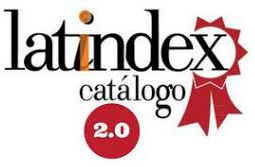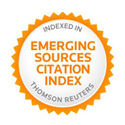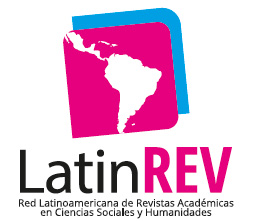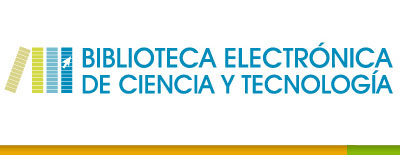Rural producers and data graph preferences for communication and technical information
Abstract
Understanding data graphs, both when performing scientific work and sharing scientific data, is a topic that is receiving increased attention around the world. This is particularly the case when it comes to rural producers, since agencies and other institutions must explain improvements and technical contributions in a simple, digestible manner. For this paper, we surveyed 80 rural producers in the south-central region of the Province of Entre Ríos in Argentina, investigating their preferences for certain types of data graphs. We asked for their position on bar graphs (either horizontal or vertical) as opposed to line graphs (combined in the same graph or as separate graphs). We found that respondents significantly preferred bar graphs (76.25%, p=0.001) and, among those, also preferred vertical bar graphs over horizontal (78.75%, p=0.000). There was no preference for line graphs in a single graph or separated across four graphs. Dividing respondents by age group, academic level, and years of rural activity yielded only slight variations next to the global percentages. In conclusion, these results reveal the importance of designing simpler data graphs when sharing information with rural producers.
Downloads
References
Ali, N. y Peebles, D. (2013). The effect of gestalt laws of perceptual organisation on the comprehension of three-variable bar and line graphs. Human Factors, 15,183-203. https://doi.org/10.1177/0018720812452592.
Arribalzaga, E., Borracci, R., Giulano, R. y Jacovella, P. (2005). El artículo científico: del papiro al formato electrónico. Magister Eos.
Brunetti, P. M. (2013). Visitando las estrellas: Martín Gil y el discurso de divulgación astronómica en la Argentina de comienzos del siglo XX. Austral Comunicación, 1(2), 137-154. https://doi.org/10.26422/aucom.2012.0102.bru.
Cox, N. C. (2004). Speaking Stata: graphing categorical and compositional data. The Stata Journal, 4(2):190-215.
Hartley, J., Cabanac, G., Kozac, M. y Hubert, G. (2013). Research on tables and graphs in academic articles. Pitfalls and promises. Journal of the American Society for Information Science and Technology, 22, 1-7.
Instituto Nacional de Tecnología Agropecuaria. (2016a). Historia del INTA. www.inta.gob.ar/sobre-el-inta/historia.
Instituto Nacional de Tecnología Agropecuaria. (2016b). Bibliotecas Central INTA. www.inta.gob.ar/publicaciones/bibliotecas-inta.
Instituto Nacional de Tecnología Agropecuaria. (2021). ¿Qué es el INTA? www.inta.gob.ar/queeselinta#.
Kassie Waller, B. S. (2018). The effect of infographics on recall of information about genetically modified foods (Tesis de maestría). Texas Tech University, Texas, Estados Unidos. https://ttu-ir.tdl.org.
Kelleher, C. y Wagener, T. (2011). Ten guidelines for effective data visualization in scientific publications. Environmental. Modelling y Software, 26(6), 822-827. https://doi.org/10.1016/j.envsoft.2010.12.006.
Krum, R. (2013). Cool infographics. Effective communications with data visualization and design. Wiley.
Leach, M. J. (2017). Determining effective communication strategies used by Texas AyM AgriLife Extension to educate the uninformed, uninvolved public (Tesis de maestría). West Texas AyM University, Texas, Estados Unidos.
Naveira, C. A. (2019). Optimización de figuras y gráficos para su uso en divulgación científica a productores rurales (Tesis de maestría en Gestión de Contenidos). Universidad Austral, Argentina. https://riu.austral.edu.ar/handle/123456789/700.
Osinska, V. (2018). Visualizing the scientific information nowadays: the problems and challenges. Informatio et Scientia, 1(1), 17-25.
Palacio Montes, J. A. (2017). Lectura e interpretación de gráficos estadísticos como estrategia de enseñanza aprendizaje en ciencias (Tesis de maestría). Universidad Nacional de Colombia, Manizales, Colombia. www.unal.edu.co.
Peebles, D. y Ali, N. (2009). Differences in comprehensibility between three-variable bar and line graphs. En Taatgen, N. A. y Van Rijn, H. (Eds.), Proceedings of the Thirty-first Annual Conference of the Cognitive Science Society (pp. 2938-2943). Cognitive Science Society.
Peebles, D. y Ali, N. (2015). Expert interpretation of bar and line graphs: the role of graphicacy in reducing the effect of graph format. Frontiers in Psychology, 6, 1673. https://doi.org/10.3389/fpsyg.2015.01673.
Spina, G. D. y Díaz, C. B. (2020). La cobertura de las noticias científicas en diarios digitales argentinos (2017-2018). Austral Comunicación, 9(1), 5-43. https://doi.org/10.26422/aucom.2020.0901.spi.
Tufte, E. R. (2007). The Visual display of quantitative information (2a ed.). Graphics Press.
Zacks J. y Tversky, B. (1999). Bars and lines: A study of graphic communication. Memory & Cognition, 27, 1073-1079.
Copyright (c) 2021 Carlos Alberto Naveira, Aldo Calzolari

This work is licensed under a Creative Commons Attribution-NonCommercial 4.0 International License.
The authors retain the copyright and guarantee the journal the right to be the first publication of the work. In case that a translation of the article already published in Austral Comunicación can be published in another journal, it is requested to record the original publication in the translated version.
The license used is CC BY-NC-SA, which allows sharing (copying and redistributing the material in any medium and format) and adapting (remixing, transforming and building on the material) under the following terms: attribution (acknowledge authorship) and non-commercial (the material cannot be used for commercial purposes). Update: February 1, 2022.
Austral Comunicación allows the author (s) to retain the publication rights without restrictions.











































